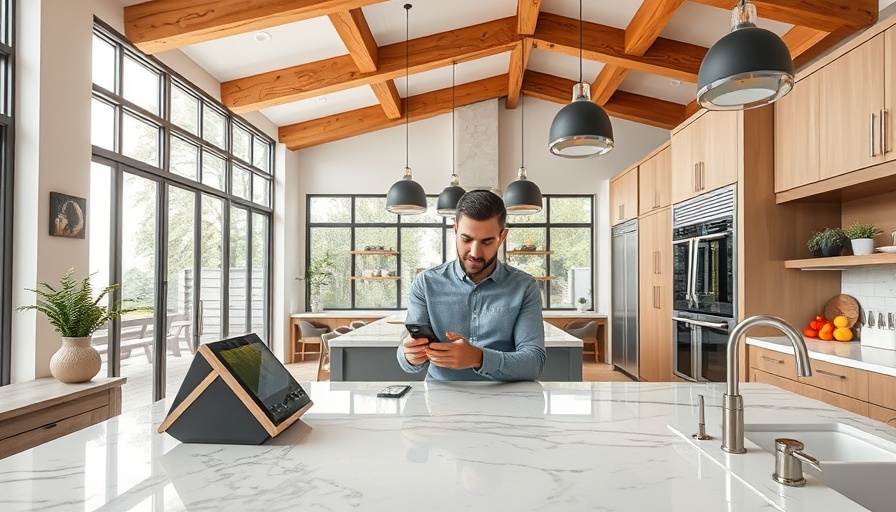
Understanding the Importance of a Smart Home Dashboard
As technology continues to revolutionize our living spaces, having a well-designed smart home dashboard becomes essential for maximizing the convenience of smart home devices. In today’s climate, where homeowners are increasingly investing in smart technologies, knowing how to build an effective and easy-to-use dashboard takes precedence. Not only does it streamline interactions with devices, but it also enhances overall efficiency and experience within the home.
In How to Build the PERFECT Home Assistant Dashboard!, the creator shares insights on optimizing smart home technology, and we’re expanding on these key design principles.
The Seven Rules for Designing Your Home Assistant Dashboard
In the enlightening video titled How to Build the PERFECT Home Assistant Dashboard!, the creator provides invaluable tips grounded in practical experience. The core advice hinges on seven rules about how to design a dashboard that works seamlessly for you and your family:
1. Design for Location
Start with the logical step of designing your dashboard based on its physical location within your home. For instance, a dashboard in the kitchen should provide real-time access to frequently used commands, while a bedroom dashboard can focus more on lighting controls and environmental settings. By categorizing dashboards into room-specific, shared family spaces, and mobile devices, you will cater to the unique needs of each environment.
2. Maximize Space
Utilizing dashboard space effectively is vital. Select two to four sections for displaying data in a way that avoids clutter. Use tile cards that offer compact, customizable options rather than traditional larger cards, ensuring that you’re making efficient use of available screen real estate.
3. Avoid Clutter
One of the most common pitfalls in dashboard design is overloading it with unnecessary devices and information. It's better to highlight essential controls that align with daily usage rather than boast about advanced functionalities that may rarely be used. Remember, less is often more when it comes to ensuring family members engage with the dashboard.
4. Limit Views
Creating fewer views means simpler navigation and less time for upkeep. Instead of making multiple dashboards, focus on consolidating controls to enhance usability. Using dropdown selectors for room controls can minimize the space needed while keeping everything neatly organized.
5. Avoid Scrolling
A well-designed dashboard should allow users to find the information they need quickly without having to scroll excessively. Relocating seldom-used controls to subviews or popups can contribute to a more organized interface that facilitates quick access.
6. Quick Access
Users should be able to locate anything on the dashboard in under three seconds. Pay attention to layout, positioning important commands at higher visibility spots. Consider employing custom colors and icons that help differentiate controls, making them easier to identify at a glance.
7. Create Shortcuts
Shortcuts can drastically improve speed and efficiency when accessing devices and settings. By creating shortcut links to specific automation within the dashboard, users can overcome lengthy navigations that detract from convenience, especially in urgent moments.
Transforming Your Dashboard into a Family-Friendly Hub
Tailoring a dashboard not just for personal use but making it adaptable for all family members can significantly enhance usability. This encourages interaction and adoption of smart home features by everyone in the household. With the right design strategies, even novice users can quickly learn to navigate the dashboard with ease and confidence.
The Broader Implications of Smart Home Dashboards
Beyond individual convenience, well-designed smart home dashboards point to a larger trend in technology integration into daily living. As advancements in IoT (Internet of Things) continue, the demand for intuitive control systems will only grow. Families seeking to engage more with technology will find that a user-friendly interface fosters exploration and adaptation.
Conclusion: The Future of Smart Home Technology
As you embark on creating or refining your smart home dashboard using the seven rules outlined, remember that the goal is enriching your living experience. Embrace these principles, and you will construct a highly functional and engaging dashboard that meets your family's unique needs. For those contemplating their smart home journey, consider the implications of these insights, and begin to reimagine your living spaces.
 Add Row
Add Row  Add
Add 




Write A Comment